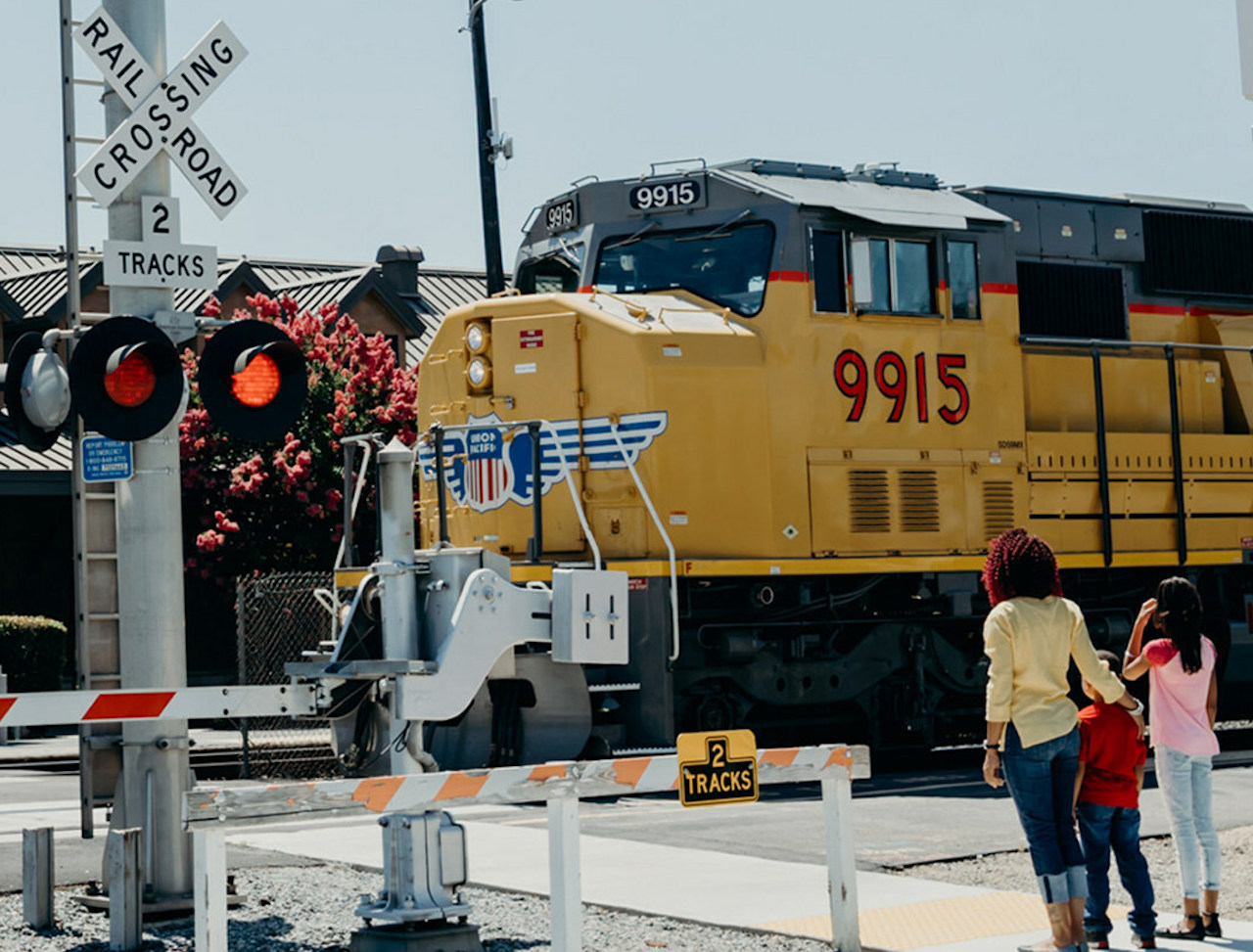
Safe Kids Worldwide, UP Team Up During Rail Safety Week
Written by Carolina Worrell, Senior Editor
Only cross train tracks at a designated crossing. Designated crossings are marked by a sign, lights, or a gate. (Safe Kids Worldwide photo)
To prevent rail-related injuries and deaths to kids, Safe Kids Worldwide and Union Pacific (UP) are teaming up during Rail Safety Week to release a series of resources designed to “raise awareness, educate communities, and encourage parents to talk to their kids about rail safety from an early age.”
Part of the Safe Kids Worldwide/UP series includes a “Take it From a Teen” video challenge, a special opportunity for teenagers to educate their fellow teens about critical rail safety information. The winning video was produced by Josie McCue from Reno, Nev., and can be viewed below.
In many communities, areas near train tracks are a popular place for young people to “hang out,” said Safe Kids Worldwide. Many people, including kids and adults, walk along the tracks, cut across them as a short cut, and pose for group photos and selfies without knowing the facts about trains:
- Trains are at least three feet wider than the tracks on either side.
- Modern trains are quitter than people might think.
- Once a train starts to brake, it can take up to a mile for the train to completely stop.
According to Safe Kids Worldwide, in the years between 2013 and 2022, more than 500 children died of rail-related injuries and nearly 1,200 were injured. Trespass incidents make up 67% of these fatalities and 50% of the nonfatal injuries. Notably, teens, ages 15-19, are the age group most frequently impacted by trespassing incidents, which inspired the video challenge, according to the organization.
In addition to the “Take it from a Teen” video challenge, Safe Kids and UP are sharing the following resources, materials, and tips to educate parents, teens, and younger kids and create a community of rail safety advocates.
- Rail Safety Educator Kit for teachers and librarians to help educate and entertain younger kids. Each kit consists of a large print version of Clifford and the Railroad Crossing to facilitate story time and teach children how to be safe around railroad tracks.
- The “Rail Safety Station,” available here, is an online hub with sharable content for educators, community partners, parents, and caregivers.
- Rail Safety Tips, to help prevent railroad-related injuries:
- Only cross train tracks at a designated crossing. Designated crossings are marked by a sign, lights, or a gate.
- If lights are flashing or the gate is down at a railroad crossing, wait for the train to pass completely, the gates to lift and the lights to stop flashing before crossing the tracks.
- Allow enough space for your vehicle to completely clear the entire railroad crossing, not just the tracks, before you attempt to cross.
- If you are using a cell phone, headphones or playing a game, remember: heads up, devices down when you cross the tracks.
- Don’t walk along the train tracks. It might be a shortcut, but it is dangerous and not worth the risk. It is also against the law to walk on the track and the land around it because it is private property.
“Every two days a child is killed or injured in a train collision and nearly every tragedy is preventable,” said Safe Kids Worldwide President Torine Creppy. “Our work with Union Pacific is all about helping parents, kids, and communities get the life-saving information they need to protect themselves and their kids.”
“As an integral part of the nation’s transportation network, Union Pacific is fully committed to the safety of our communities—especially youth,” said UP Vice President-Public Affairs Liisa Stark. “Our collaboration with Safe Kids Worldwide during Rail Safety Week is more than just a campaign; it’s a call to action. Let’s turn awareness into meaningful change, ensuring railroad tracks are for trains, not tragedies.”



